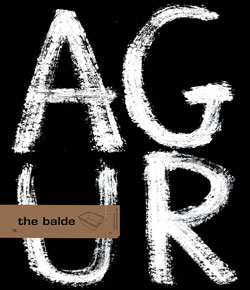love is a vampire
Fernand is a vampire who lives in Vilnius and falls in love easily, too easily. And, of course, he suffers as everyone who has the ability/illness to fall in love easily does. Hey, it isn’t easy! Fernand also has a special ability to make girls fall in love and to make all of them, or almost all of them, want him to bite their neck. Fernand bites them with a single tooth to avoid leaving too much of a mark. Ferdinand ies in a particular way. It’s as if he didn’t want to. He lives in his own castle but rents bedrooms out because he likes company. Fernand pays no attention to vampire hunters. He hardly notices them. What he does mostly is sleep by day and go to his lovers’ houses at night. Ferdinand’s reason to live is love and sex: it’s as simple and perfect as that.
Ferdinand’s adventures and misadventures are told in Vampir eta L ́Amour (le bestiaire amoureux), Joann Sfar’s comic album which is, for the writer of these lines, his nest work. To complete this masterpiece by Johann Sfar, we have to mention the Spanish edition brought out by Fulgencio Pimentel publishers. A way to stick your teeth in. We think that Sfar’s worked with greater freedom than ever in this comic. Romanticism and comedy are the basis of the story. Naturalness is the key to the story, with irony, desire, love, the opposite of love and sex thrown in. The writer’s greatest success is in the dialogues. It often seems that he improvises the dialogues as he writes. As far as his drawing is concerned, saying he’s a master is nothing new. Sfar has spent years experimenting in each of his comics. The drawings in this work are very free and organic. Sometimes in his use of colour, other times in his way of organising vignettes, Sfar takes us from Sempe’s naive minimalism to Edward Gorey’s Gothic darkness without ever missing a chance for aesthetic beauty. As, just as he does with the dialogues, you get the impression that Sfar makes the stories up as he draws. As if it were jazz, he changes his style of drawing as he follows the rhythm and, suddenly, he draws his sheet-music scenes in the way that many of us used to do in our school exercise-books and in the blanks in class-books. His stories and drawings are mar-vell-ous
Ferdinand’s adventures and misadventures are told in Vampir eta L ́Amour (le bestiaire amoureux), Joann Sfar’s comic album which is, for the writer of these lines, his nest work. To complete this masterpiece by Johann Sfar, we have to mention the Spanish edition brought out by Fulgencio Pimentel publishers. A way to stick your teeth in. We think that Sfar’s worked with greater freedom than ever in this comic. Romanticism and comedy are the basis of the story. Naturalness is the key to the story, with irony, desire, love, the opposite of love and sex thrown in. The writer’s greatest success is in the dialogues. It often seems that he improvises the dialogues as he writes. As far as his drawing is concerned, saying he’s a master is nothing new. Sfar has spent years experimenting in each of his comics. The drawings in this work are very free and organic. Sometimes in his use of colour, other times in his way of organising vignettes, Sfar takes us from Sempe’s naive minimalism to Edward Gorey’s Gothic darkness without ever missing a chance for aesthetic beauty. As, just as he does with the dialogues, you get the impression that Sfar makes the stories up as he draws. As if it were jazz, he changes his style of drawing as he follows the rhythm and, suddenly, he draws his sheet-music scenes in the way that many of us used to do in our school exercise-books and in the blanks in class-books. His stories and drawings are mar-vell-ous



